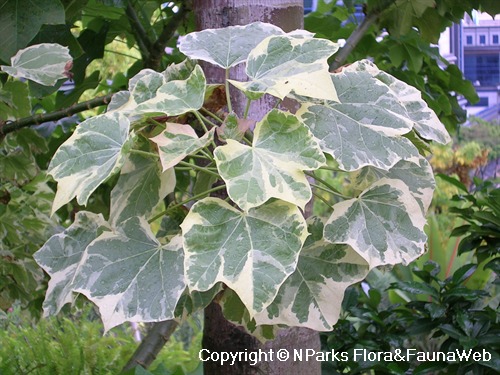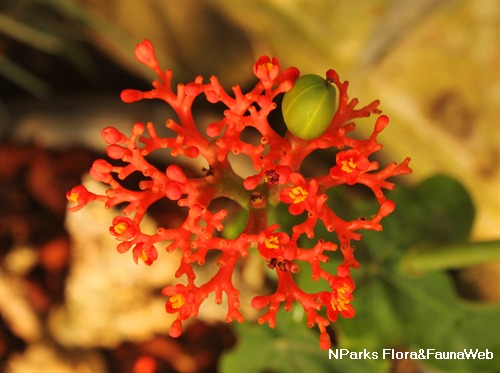
Back
Jatropha podagrica Hook.
| Family Name: | Euphorbiaceae |
| Common Name: | Buddha Belly Plant, Gout Plant, Guatemalan Rhubarb, Australian Bottle Plant, Tartoga, Jarak Bunting, Gout Stick, 珊瑚油桐, 佛肚树 |
Name
Classifications and Characteristics
| Plant Division | Angiosperms (Flowering Seed Plants) (Dicotyledon) |
|---|---|
| Plant Growth Form | Shrub |
| Lifespan (in Singapore) | Perennial |
| Mode of Nutrition | Autotrophic |
| Maximum Height | 0.6 m to 0.9 m |
Biogeography
| Native Distribution | Central America, Honduras, Nicaragua |
|---|---|
| Native Habitat | Terrestrial |
| Preferred Climate Zone | Tropical |
| Local Conservation Status | Non-native (Horticultural / Cultivated Only) |
Description and Ethnobotany
| Growth Form | Succulent herb growing up to 1 m tall. |
|---|---|
| Foliage | Large, round to ovate leaves (25-30 cm wide) are deeply divided into 3-5 lobes. Dark green, leathery leaves have prominent white veins. |
| Stems | The stem base (known as a caudex) is swollen and knobby, growing up to 0.3 m wide. It contains a toxic, milky latex. |
| Flowers | Pinkish-orange to red flowers are arranged in flat-topped, terminal clusters known as cymes. The flowers in the middle of the cluster open first. This species flowers throughout the year. |
| Fruit | Round fruits (2.5-4 cm) are initially green and fleshy, becoming dark brown at maturity. They open by explosive dehiscence, throwing seeds more than 1 m away from the parent plant. Each fruit contains 2-3 black seeds (2 cm long). The fruits are toxic upon consumption. |
| Cultivation | Leaves will grow bigger when the plant is grown in more shaded conditions. |
| Etymology | Genus Jatropha means "Physician's food" and refers to the medicinal use of the plant. Species podagrica refers to the medicinal use of the plant in treating gout. |
| Ethnobotanical Uses | Others: Roots have antibacterial properties. |
Landscaping Features
| Desirable Plant Features | Ornamental Foliage |
|---|---|
| Landscape Uses | Container Planting, Suitable for Bonsai, Interiorscape/ Indoor Plant, Small Gardens |
| Usage Hazard - Cons | Toxic Upon Ingestion, Weak Branches |
Fauna, Pollination and Dispersal
| Fauna Pollination Dispersal Associated Fauna | Butterfly-Attracting (Flower Nectar), Bee-Attracting |
|---|---|
| Pollination Method(s) | Biotic (Fauna) |
| Seed or Spore Dispersal | Abiotic (Explosive Dehiscence), Biotic (Fauna) |
Plant Care and Propagation
| Light Preference | Semi-Shade, Full Sun |
|---|---|
| Water Preference | Little Water |
| Rootzone Tolerance | Well-Drained Soils, Drought Tolerant |
| Maintenance Requirements | Low |
| Propagation Method | Seed |
Foliar
| Foliage Retention | Deciduous |
|---|---|
| Mature Foliage Colour(s) | Green |
| Mature Foliage Texture(s) | Leathery |
| Foliar Type | Simple / Unifoliate |
| Foliar Attachment to Stem | Petiolate |
| Foliar Shape(s) | Non-Palm Foliage (Ovate, Orbicular / Round) |
| Foliar Venation | Palmate |
| Foliar Margin | Palmately Lobed |
| Foliar Apex - Tip | Acute |
| Foliar Base | Truncate / Square |
| Leaf Area Index (LAI) for Green Plot Ratio | 4.5 (Shrub & Groundcover - Dicot) |
Non - Foliar and Storage
| Stem Type & Modification | Herbaceous |
|---|---|
| Specialised Storage Organ(s) | Aboveground (Caudiiform (Basal Caudex)) |
Floral (Angiosperm)
| Flower & Plant Sexuality | Unisexual Flowers , Dioecious |
| Flower Colour(s) | Orange, Red |
|---|
Fruit, Seed and Spore
| Mature Fruit Colour(s) | Brown |
|---|---|
| Fruit Type | Dehiscent Dry Fruit , Capsule |
Image Repository
Others
| Master ID | 859 |
|---|---|
| Species ID | 2154 |
| Flora Disclaimer | The information in this website has been compiled from reliable sources, such as reference works on medicinal plants. It is not a substitute for medical advice or treatment and NParks does not purport to provide any medical advice. Readers should always consult his/her physician before using or consuming a plant for medicinal purposes. |

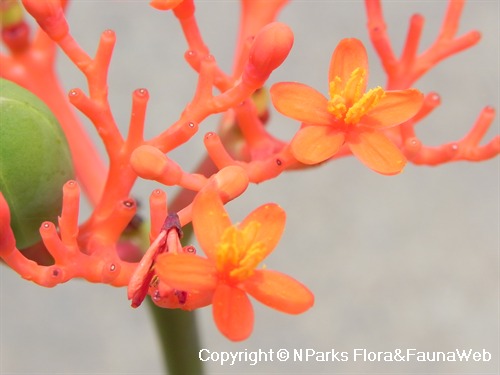
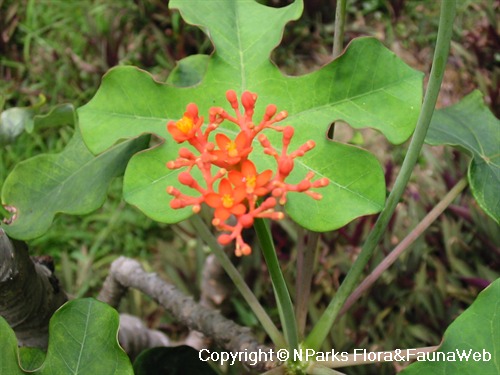
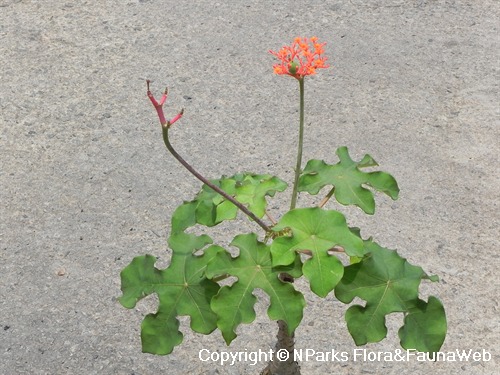
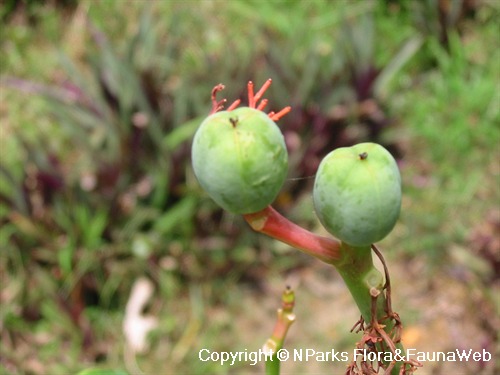
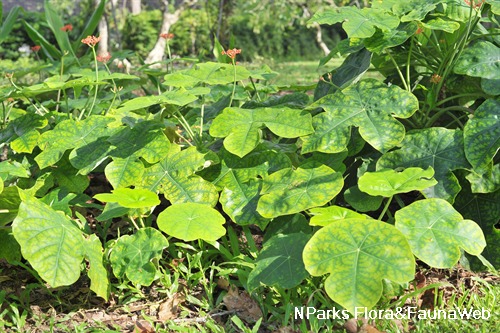


.jpg)
